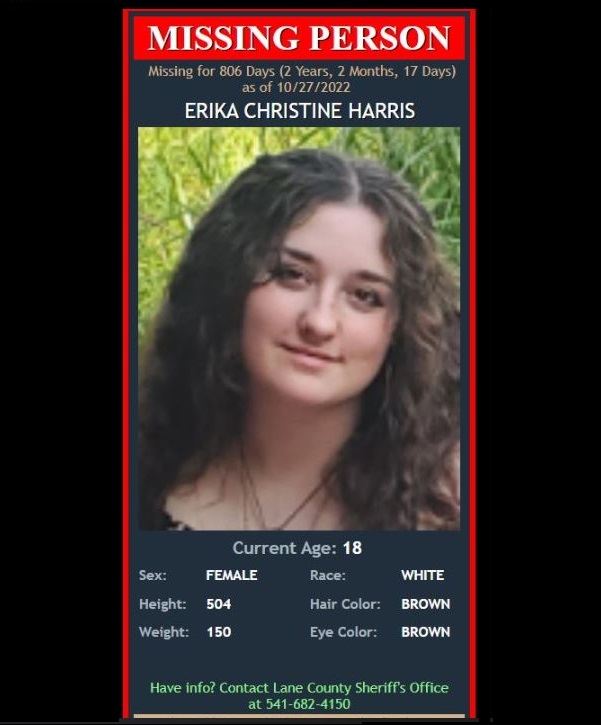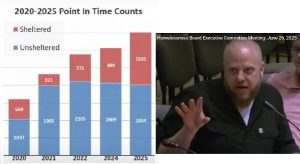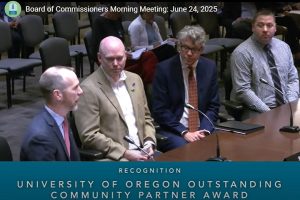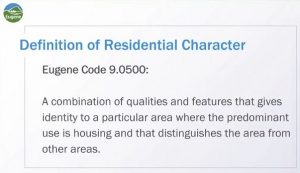Local crime website adds missing person reports
11 min read
Local entrepreneurs identify and fill a gap. Lane County Mugshots has launched the Missing Persons Project.
[00:00:07] Kevin Prociw (Lane County Mugshots): About 10 years ago, we had a vision of a hyperlocal online newspaper. We actually did have students from the School of Journalism at the U of O that were doing internships with us and writing stories. And so we had sports people, we had this, we had that.
[00:00:24] And it was actually from that online newspaper that we spun off the Lane County Mugshots because people by and large were clicking on those stories—you know, ‘Bleeds it leads’ kind of thing.
And that’s really unfortunate because I would literally go down and spend hours to cover, say, the State of the City address, go and write the story and do all the editing—from the time of actually traveling down there, being there and then writing the story later, putting it online, you might have a good eight, 10 hours invested in that story and 200 clicks, you know.
But then an accident on Beltline, and it’s like 5,000 people want to read that story, you know? And it’s like: ‘Why am I doing all this?’
[00:01:08] Around 2013 or 14, we started doing Mugshots exclusively, writing crime stories. And that does get a lot of interest because, I think we have the largest Facebook group in Lane County.
[00:01:23] It hasn’t been without some criticism and maybe rightly so too.
[00:01:27] John Q: The popular site had to retool after Oregon changed the law. HB 3273 prohibited agencies from releasing booking photos.
[00:01:37] Kevin Prociw: That new law, the intent was to say, ‘Hey, some people get their mugshots published for maybe they were wrongfully arrested, or something happened, the charges were dropped this kind of thing, and it shouldn’t follow them around for the rest of their lives.’
And I’m 100% for that. I think the spirit and the intent of the law is just in that regard because I wouldn’t want that to follow me around.
[00:02:05] But for the prolific crime, the people that are repeat offenders, I don’t necessarily have as much grace for those folks. And so, when that law came into effect we decided, well, let’s see. We won’t have any photos to show people anymore. But we’ll reuse photos from previous arrests.
[00:02:24] And in a way that works with the spirit of the law because you won’t see a mugshot for somebody if they haven’t been arrested before, you’re only going to see a mugshot if they’ve been arrested and are a repeat offender.
[00:02:37] And what was amazing is that we thought that we were maybe going to have 20%-30% or whatever. Well, it turned out to be more like 70% to 80% of the people. It shines the light on the fact that we have a revolving door at the jail: That people are getting in there, spending very little time; getting right back out; reoffending; and there’s some people that we see in their practically every other day.
[00:03:05] In some of those cases these offenders have mental health issues and so they’re doing these things not because they’re bad people. They’re doing these crimes because they’re just not capable of interacting and being a part of society the way that most people would expect them to be.
[00:03:25] I have a lot of compassion in those regards when you’re talking about people that aren’t necessarily bad people. But then there are bad people, and so we still got quite a few of those.
[00:03:37] And I remember that we were also seeing a large number of missing people at the time. And I thought, well, maybe if we shifted our focus even more, maybe if we don’t focus necessarily on mug shots, we could still talk about crime and arrests that are the more prolific crime.
[00:03:57] But maybe we can shift some of the attention towards missing people because we have the platform, the programming, the technology already here. It’s the same biographical information that you have for somebody in jail, is the same information essentially that you’re collecting for missing persons.
[00:04:14] So I started doing the programming on that and we got it all set up so that we could handle and treat missing people in a same but different way than we were doing with mugshots. So we would have photos, we have their biographical information, and then all of the other things that pertain to a missing person.
[00:04:33] What we noticed then is like, okay, well we need to start populating these photos. Let’s go out and start looking online for these photos. 183 people, I think missing in Lane County at the time. And what was amazing is we’re like, ‘Oh wait, we can’t find any photos for anybody. The only ones that we can find are for these people that have been missing for like 15 years or more.’
[00:04:55] That’s really strange because if people are missing, the photo is, like, the first thing that you think you would find out there. And that wasn’t the case. And so when you contacted the state of Oregon, which is the only official missing person’s list is through the state, and it’s like: ‘Well, we don’t have that stuff. That needs to come from the reporting agencies.’
[00:05:18] So it’s like, okay, well, hey Lane County, do you have any photos? Nope, we don’t have photos. Hey, city of Eugene, do you have photos? Nope, we don’t have photos. Hey Springfield, how about you? Nope, we don’t have photos. And it’s like, really? That’s really pretty odd.
[00:05:32] So we just really started digging in and we found a volunteer who had subscribed to different services online for researching people and looking people up and so she was able to find about 60% of that 183 people missing, she was able to find photos for. And so right on! That was great. And essentially at that point we had a better list than the state of Oregon because the state of Oregon didn’t even have that.
[00:05:59] So, then it was like, all right, what do we do with this now that we have it? And we’ve got the information and we have the photos and we can present the list to people. But what would make us unique? What could we do?
[00:06:11] And so we came up with this concept of the missing person ads so that it actually will take the profile of that person and create, on the fly, this digital ad for that missing person. And so we started displaying those when people are looking at news stories for crime or when they are looking for mugshots.
[00:06:34] So now we’re putting the mugshots out there to get the traffic, to get people to look at missing persons. And that’s worked out wonderfully because 20,000 people a day are seeing the ads on our websites and another probably 10,000 are seeing them on our Facebook pages and social media.
[00:06:54] So we’re going to expand that and we’re going to give people this one line of code that they just stick it into their website and then that missing person ad, maybe through the form of a popup or a traditional banner ad, or whatever the case may be. But now we can start to build a network where people are displaying these ads.
[00:07:15] That has gotten way more people looking at the missing people than ever before. So that’s where the value really started kicking in for this thing, is that now not only are we presenting more information we’re getting it out there to more people.
[00:07:31] John Q: The next step was to allow for local sponsors.
[00:07:37] Kevin Prociw: I thought, this is where you really want to try to get community involved. You want to get people in the community helping out. And I thought there are businesses surely out there that are interested in helping the community in this way. And so I created a—it’s not like you see their logo, but at the very bottom of the ad, ‘This ad was made possible with a sponsorship by so and so.’
[00:08:01] So we’ve given that ability for people to sponsor the ads. And so we’re working to actively to try to get people to do that.
[00:08:08] John Q: Working with the data every day, Kevin now sees different kinds of missing persons.
[00:08:12] Kevin Prociw: You really start to get a feel for the different classifications of missing people that are out there. When you hear the number 183 missing people in the county, you’re like, ‘Holy cow, this seems like a lot of people.’ And then when you start to dig in, there’s the type of people that have gone missing that they were there one day and they were gone the next. Don’t know what happened. This is unusual foul play. Something crazy is going on. These people are in trouble.
[00:08:44] But then you find that there are like some missing people that we didn’t have pictures for ’em, but my program, because it’s tied in with what we were doing with (Lane County) Mugshots, found their picture from an old mugshot. About maybe 20% of the people had been in jail before. We contacted Lane County about that and they say, if they are on the list, then that means their family reported them as as missing. Well, there sure are a lot of people on the list that had been in jail before. So we’re trying to understand that number a little bit more and see if we could figure that out.
[00:09:21] There’s a lot of these kids that are on the list too. Are they being trafficked? What’s going on? And so people might see the children on the list under 18 and go, ‘There’s a serious problem with kids being kidnapped.’ Well, turns out that in a high number of those cases, these kids are in a bad situation with their custodial parent. They run away. They leave. The custodial parent then calls and reports them as missing, and so they wind up on the missing persons list.
[00:09:51] Well, they’re not really missing. They got out of a bad situation and they’re not with their custodial parent. So from the child’s perspective, they probably really don’t want to be found, you know?
[00:10:04] So I think what we’re starting to discover is that through these different categorizations, that the number of truly missing people is probably not as high as we think that it is.
[00:10:17] And there’s a lot of turnover too. The one thing about writing the program was like I scraped the Oregon State list. Every two hours it just goes and grabs and you see all the people that are missing, but you don’t see what their outcomes are when they’ve been found.
[00:10:33] And so I think a lot of people are interested in knowing, ‘Well, what happened with that person?’ So we don’t always know, but we also at least can be able to say they’re no longer missing anymore because the program grabs the list and it says, ‘Oh, that person isn’t on the list anymore,’ so we mark that and we will put ‘Found (pending)’ or something along that line, so we at least know not to look for them anymore.
[00:10:58] The last six months, there’s probably 200 people who have been missing and have since been found or no longer on the list. That’s the kind of data that I think is important and that we don’t get when you’re just dealing with the public entities like the state or the cities.
[00:11:14] The number one thing is let’s get a photo out there and make sure that people know who they’re looking for. Just like, you can’t even get that. And I’m really super surprised that when you go to Lane County or the city websites and stuff like that, that they don’t even link to the Oregon State list and say, well, here’s the missing people.
[00:11:33] You can’t even find any kind of real current list at all without really digging for it. And it’s like, why is that? This should be right up there, high profile. But nope. You know?
[00:11:45] So not only are we maintaining this list, but we get people that contact us all the time and they’re wanting to know, how do you get a name on the list? And we encourage them to report officially first so that it goes to the official channels and winds up on the official list.
[00:12:03] But what happens is with the state only updating their list once a week, and that’s usually on a Wednesday. So let’s say Wednesday afternoon somebody comes along and reports a missing person and then that goes to the state system, but it doesn’t wind up on their official list right away. They actually have to run a program to then pull it back out of the system and put it on their list.
[00:12:27] Well, if they don’t do that for another week, you have a whole week where that person doesn’t even show up on the list. So they contact us because they want to get on there sooner, so we say, ‘Okay, file the official report, but then come back and file one with us. Send us a picture and we’ll get ’em up there.’
[00:12:46] And so what’s happened is that in some cases we get it on the list, the person gets found and then taken off our list, and then, oh, they show up on the list again because now Oregon has just caught up. And so then another week later before they come back off the list, so it’s like we’re literally talking about a time lag of up to a week if not more.
[00:13:13] So this makes it real time, as much real time as we can possibly make it. And that’s the way it should be.
[00:13:18] I guess that doing this, we had no idea what we were getting into when we started doing this. We just thought, hey, we should cover missing people too, because people will be interested in that. Maybe we could help. There’s just so many things that are fundamentally flawed about the way that we’re doing it now.
[00:13:35] So we do believe that we can fill that gap. And the ads are a nice and interesting twist. Nobody else is doing that. So even though there are other missing person sites out there—NamUs, The Charley Project, a couple others or whatever—none of them are doing the ads.
[00:13:52] John Q: To sponsor a missing person ad, see the GoFundMe page or the Lane County Mugshots website.





